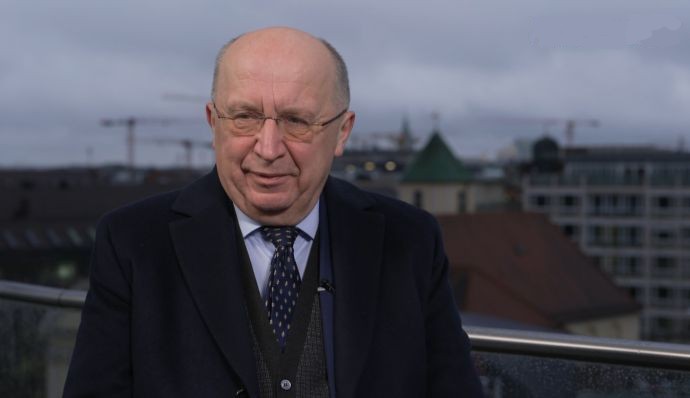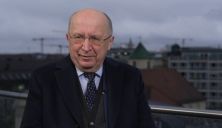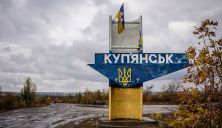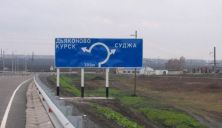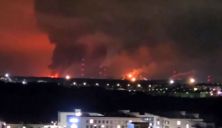In what format should negotiations with Russia take place regarding the end of Putin’s war against Ukraine? Will European NATO countries be able to increase defense spending to 5% of GDP, as the U.S. demands? What kind of security guarantees should the West provide to Ukraine?
These topics were discussed in an exclusive interview with FREEДOM TV on the sidelines of the Munich Security Conference by the European Commissioner for Defense and Space, Andrius Kubilius.
Host — Vitalii Syzov.
— There is a lot of talk now about the need to invest not only in the EU’s defense industry but also in Ukraine’s defense sector. You are working on the “White Paper” on European Union defense. To what extent is Ukraine included in this important document?
— At the Munich Security Conference, we will discuss issues related to the defense industry. And, of course, Ukraine will take a prominent place in these discussions—both in terms of defense capabilities and in the context of political events, American and European initiatives. These will be days of very intense discussions.
As for the “White Paper,” we plan to publish it in mid-March. It will focus on several important topics. The first is how to prepare our own defense industry to produce what EU member states need to achieve NATO’s capacity-building goals and to implement this process very quickly. Various intelligence agencies indicate that by 2030, Russia is preparing to strike the European Union and its member states.
Of course, the “White Paper” will also address how we can help Ukraine and, at the same time, help ourselves. Because Ukraine is defending all of us and implementing the concept of “peace through strength.” This is the only correct path to a just peace in Ukraine.
To implement this formula, we must continue to support Ukraine from the outside—through joint efforts of the West, the EU, and the U.S. The European Union must have a clear plan on how to strengthen Ukraine’s capabilities to achieve this much-needed “peace through strength.”
— On February 12, the first meeting of the Ukraine Defense Contact Group (the “Ramstein” format) took place after Donald Trump took office. For the first time, it was chaired not by the U.S. but by the United Kingdom. Do you see the possibility of the EU and the U.S. continuing to work together to strengthen Ukraine’s military potential, as they have over the past three years?
— Over the past three years, we have worked closely with the United States.
In that time, the U.S. has provided approximately €60 billion in military aid. Our military support (from the EU) has amounted to about €48 billion. However, if you look at the full package of support—including military, budgetary, and humanitarian aid—our support for Ukraine has actually exceeded that of the U.S. We have provided a total of approximately €130 billion, while U.S. assistance amounts to €100 billion.
Therefore, I hope that an equitable level of support for Ukraine will continue.
In any case, we will continue standing with Ukraine in achieving real and just peace—”peace through strength.”
And we see no benefit in negotiations [with Russia] that do not include either Ukraine or the European Union.
— You mentioned that Russia could attack EU countries within five years. There are reports that Russia is increasing its troop numbers by 150,000 soldiers. The U.S. claims that NATO countries should spend 5% of GDP on defense or even more. How do you assess this figure, and is it realistic to reach that level?
— Some European countries are approaching the 5% mark, especially those that feel the threat most acutely, such as the Baltic states and Poland.
I hope that at the NATO summit in June, an agreement will be reached to increase national defense spending to at least 3% or 3.5%.
We have very clear calculations on how much we need to spend and how to attract additional funds at the EU level. We are also looking at ways to convince the banking sector to invest significantly more in defense. Right now, it’s not just about percentages or how much we need to spend.
It’s about the capabilities we must have on the European continent to be ready to defend ourselves and deter Russian aggression.
That is why we are working closely with NATO to assess what capabilities European member states need to develop.
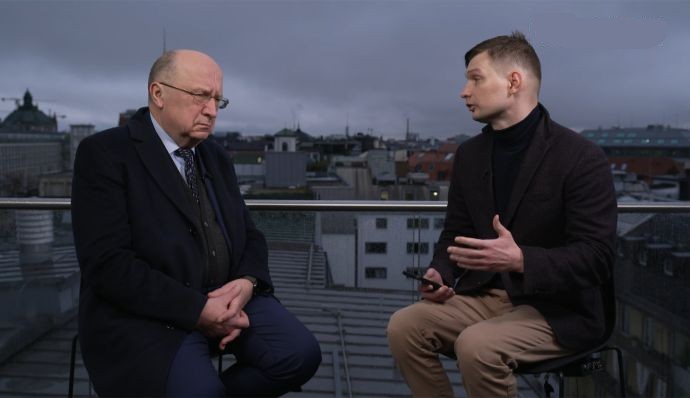
— From your perspective, what is the best model for Ukraine to protect itself from Russia, ensure its territorial integrity and sovereignty, and maintain its independence?
— My personal opinion is very simple.
The best security guarantee for Ukraine—the most effective and least costly—is, of course, Ukraine’s membership in NATO.
However, since some countries oppose this, NATO member states will need to discuss what security guarantees they can and must provide to Ukraine. I recently participated in a discussion in Paris in the “Weimar+” format (Germany, Italy, Poland, Spain, the UK, the EU, and Ukraine), where six or seven foreign ministers, including Ukraine’s Foreign Minister Andrii Sybiha, were present. The discussion specifically focused on what kind of security guarantees should be provided to Ukraine.
— Potential negotiations with Russia—what role should the EU play in them, and what other tools could the EU use to stop Putin and Russian aggression?
— Before negotiations can begin, the European Union, together with the U.S., must implement the second part of the “peace through strength” formula. We need to provide Ukraine with additional leverage—more weapons and military equipment that Ukraine needs. This way, we can all show Russia that they will gain nothing in Ukraine and that it is in their best interest to come to the negotiating table.
However, negotiations must be conducted in a very clear and transparent manner. The participants at the negotiating table should include Ukrainians, Americans, Europeans, and Russians.
Read also: Occupiers Have Intensified in the Kupiansk Direction: Goals Analyzed by Dmytro Sniehyrov

